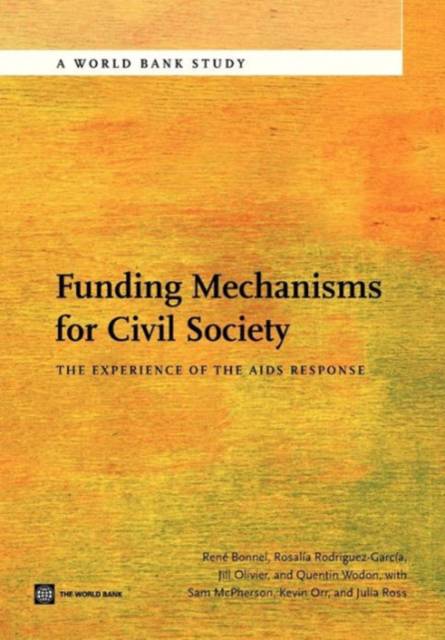
- Retrait gratuit dans votre magasin Club
- 7.000.000 titres dans notre catalogue
- Payer en toute sécurité
- Toujours un magasin près de chez vous
- Retrait gratuit dans votre magasin Club
- 7.000.0000 titres dans notre catalogue
- Payer en toute sécurité
- Toujours un magasin près de chez vous
Funding Mechanisms for Civil Society
The Experience of the AIDS Response
Rene Bonnel, Rosalia Rodriguez-Garcia, Jill Oliver
44,45 €
+ 88 points
Description
In the past decade the global financial assistance for AIDS responses increased tremendously and the donor community provided greater resources to community responses. Yet little is known about the global magnitude of these resources and their allocation among HIV and AIDS activities and services. To address this knowledge gap, this report pulls together evidence from several different sources (donor data bases, surveys of civil society organizations, country funding profiles) to determine, among other things, how funds are reaching civil society and community-based organizations, how these funds are being used, and the degree to which these organizations rely on other sources of funding. The analysis suggests that funding flows have increased dramatically for civil society organizations (CSOs), reaching at least $690 million per year on average during the period 2003-2009. However, much smaller funding is reaching organizations at local level.
Spécifications
Parties prenantes
- Auteur(s) :
- Editeur:
Contenu
- Nombre de pages :
- 112
- Langue:
- Anglais
- Collection :
Caractéristiques
- EAN:
- 9780821397794
- Date de parution :
- 16-01-13
- Format:
- Livre broché
- Format numérique:
- Trade paperback (VS)
- Dimensions :
- 178 mm x 254 mm
- Poids :
- 213 g

Les avis
Nous publions uniquement les avis qui respectent les conditions requises. Consultez nos conditions pour les avis.






